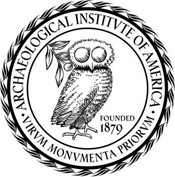
The Spokane Society of the Archaeological Institute of America (AIA) has been hosting lectures on the topics of archaeology and ancient civilizations for over 60 years.
Each year a lecture series featuring local, national and international speakers is held on Wednesday nights at the Northwest Museum of Arts and Culture in Browne's Addition (2316 W. 1st Ave). All lectures begin promptly at 6:30 p.m., are FREE and open to the public. Some of the visiting AIA speakers also give a second lecture on the same or the following day on the Gonzaga campus; please see our "Upcoming Events" page for further details.
The AIA Spokane Society is on Facebook.
